At some stage during this year’s edition of Art Basel I overheard the opinion that the art fairs are a vanity project. This is when I began to contemplate what the art fair really is…
Is it a celebration of art; a place where artists are promoted? Or is it rather the place where their position on the art market can be established, and also where the position of galleries can be strengthened? In some ways, art fairs probably reflect all the above-mentioned, while, simultaneously, constitute an opportunity for art collectors to show off and dazzle others with their financial status, and the fact that they are members of this elite collective, or “chosen ones”. When we observe different fairs organised around the world, art fairs, just like other fairs, as suggested by their name, are events primarily focused on trade and market development, as well as increasing company capital, establishing business contacts, and initiating collaborations. In spite of all this, art fairs are unique. The value of the ‘goods’ on offer is not simply material, easily quantifiable and universal. Other than that, these artefacts are mainly about their artistic value, the one which is intellectual, intangible, difficult to quantify, and above all, highly subjective.
These goods are not essentials and it is possible to live without them, therefore they are considered luxury goods.
The number of exhibitors at art fairs is small in comparison with other fairs. However, the capital flow between gallery owners and collectors is one of the largest. The number of transactions entered every day is enormous. In fact, it is impossible to count this number, since not only the works of art physically delivered to the fair venue are sold, but also those for which the buyer has made his offer remotely, or, as bizarre as it may seem, those which have not yet been created. For instance during the first hours of the closed preview, Mark Rothko’s work was sold for fifty million dollars. This gives an indication of the amount of cash flowing through the fair.
Polish galleries and artists also participate in this unique market. As you can easily imagine, the transactions carried out by them are not nearly as spectacular as those completed by participants from countries with stable art markets, which have established their position throughout the years. Nevertheless this situation is slowly changing too. Prices for works by certain artists rise, the artists in turn establish their presence in the international art market and their works form a part of private and museum collections. This process however, requires enormous patience, perseverance and laborious work from gallery owners. In the case of ArtBasel, the number of participating Polish galleries has not change since last year. Foksal Gallery Foundation and Starmach Gallery are regular participants at this event. The presence of Polish artists at the fair was not simply confined to presenting work in these two stands. Other than that, the number of international galleries which present Polish work seems on the rise. As far as we know, this year there were twenty six galleries which included works by Polish artists in their stands. Moreover, the works of two Polish artists were presented in the Parcours sector and in the monumental Art Unlimited. These artists are Alicja Kwade and Jakub J. Ziółkowski.

Alicja Kwade | ‘Der Tag ohne Gestern l – lll’, 2014-2015 Parcours in Basel 2015
© Art Basel
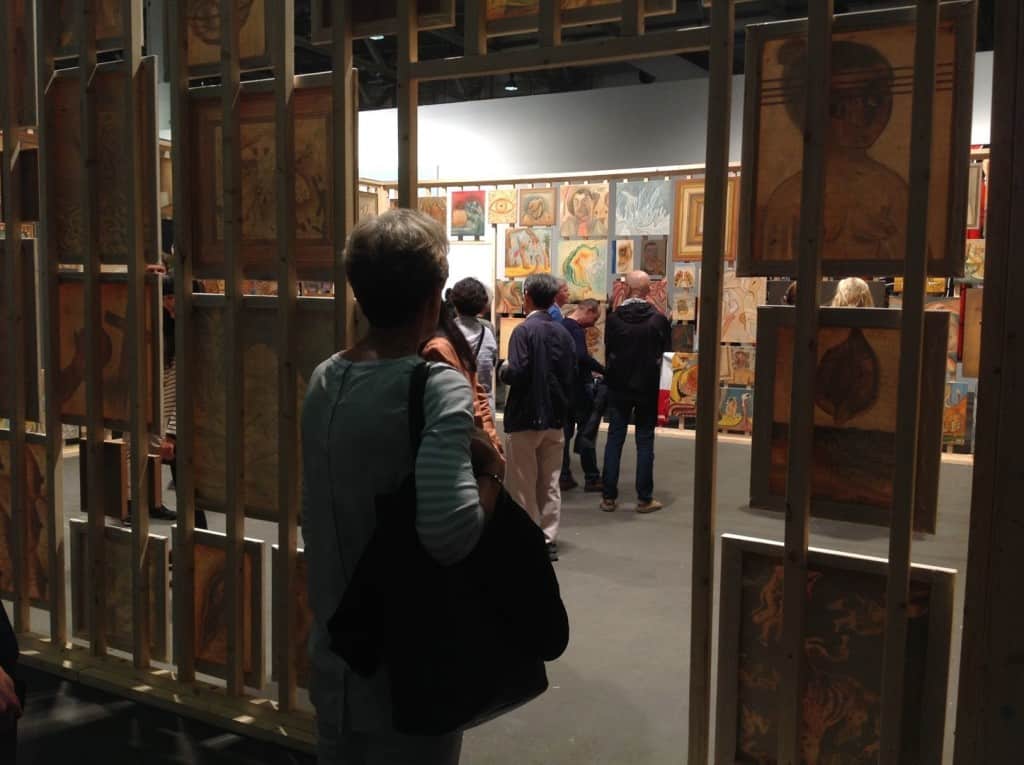
Jakub Julian Ziółkowski, Imagorea, Art Unlimited, photo Contemporary Lynx
Alicja Kwade’s works were displayed by 303 Gallery (New York), Galerie König (Berlin) and galerie kamel mennour (Paris). The works featured were a group of objects entitled “Der Tag ohne Gestern l – lll”. A huge surprise was Ziółkowski’s sensational installation entitled “Imagorea” presented in the Art Unlimited sector. Uncanny objects-pictures were placed into a wooden box which resembled a cage. Each object created a unique reality filled with extraordinary phenomena, associations, and links between them. Together they constituted a separate, enclosed universe. They were tangible proof of the existence of a certain parallel world, which managed to enter our consciousness thanks to the artist who played the role of the medium. This is why we were able to experience this world and see it with our own eyes. This magnificent installation attracted huge number of visitors. The quality of the work was confirmed by it being awarded a place within the group of the best ten works presented at ArtBasel. Well-deserved…

Jakub Julian Ziółkowski, Imagorea, Art Unlimited, photo Contemporary Lynx

Jakub Julian Ziółkowski, Imagorea, Art Unlimited, photo Contemporary Lynx

Jakub Julian Ziółkowski, Imagorea, Art Unlimited, photo Contemporary Lynx
As is the case every year, the works by Mirosław Bałka could be seen at the fair. Visitors ha the opportunity to admire them at the stand of Dvir Gallery, which, at the same time is holding a solo exhibition of Bałka’s works at its headquarters in Tel Aviv and at the stand of Galerie Nordenhake.

Mirosław Bałka, Dvir Gallery, photo Contemporary Lynx
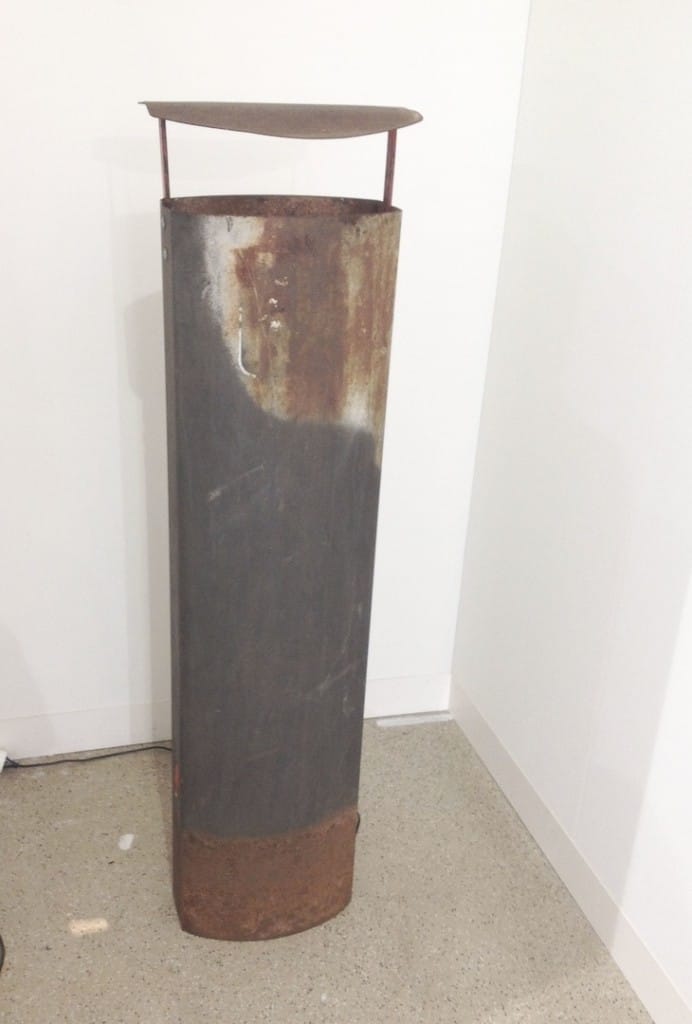
Mirosław Bałka, 133 x 35 x 27, 2015, steel, electric bulb, photo Contemporary Lynx
Polish art classics could be appreciated thanks to Berlin’s Galerie Berinson. Photographs by Stanisław Ignacy Witkiewicz and Józef Głogowski were presented alongside works by Picabia and Belmer. Their photographs depicted the artists themselves, as well as other people in strange, contorted poses, with strange facial expressions. Among drawings, gouaches, and works on paper there was also an early drawing by Wojciech Fangor, as well as the beautiful abstract work on carbon paper by Wacław Karol Szpakowski.
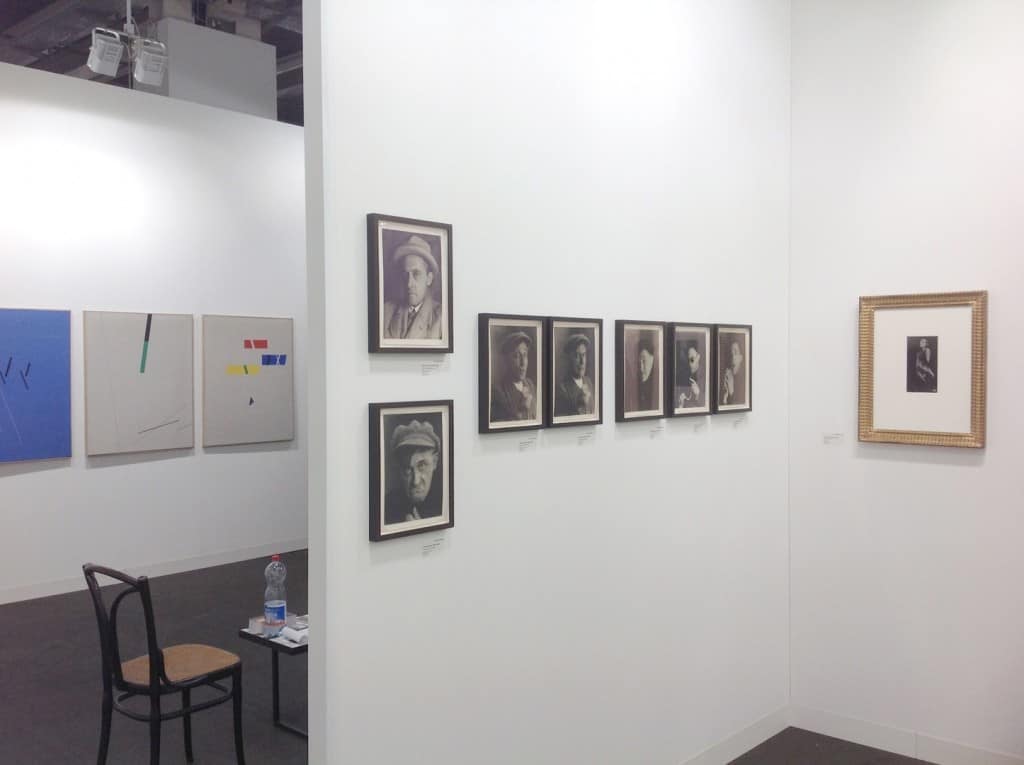
Photographs by Józef Głogowski, Stanisław Ignacy Witkiewicz, Galerie Berinson, photo Contemporary Lynx

Photographs by Józef Głogowski, Stanisław Ignacy Witkiewicz, Galerie Berinson, photo Contemporary Lynx

Photographs by Józef Głogowski, Stanisław Ignacy Witkiewicz, Galerie Berinson, photo Contemporary Lynx
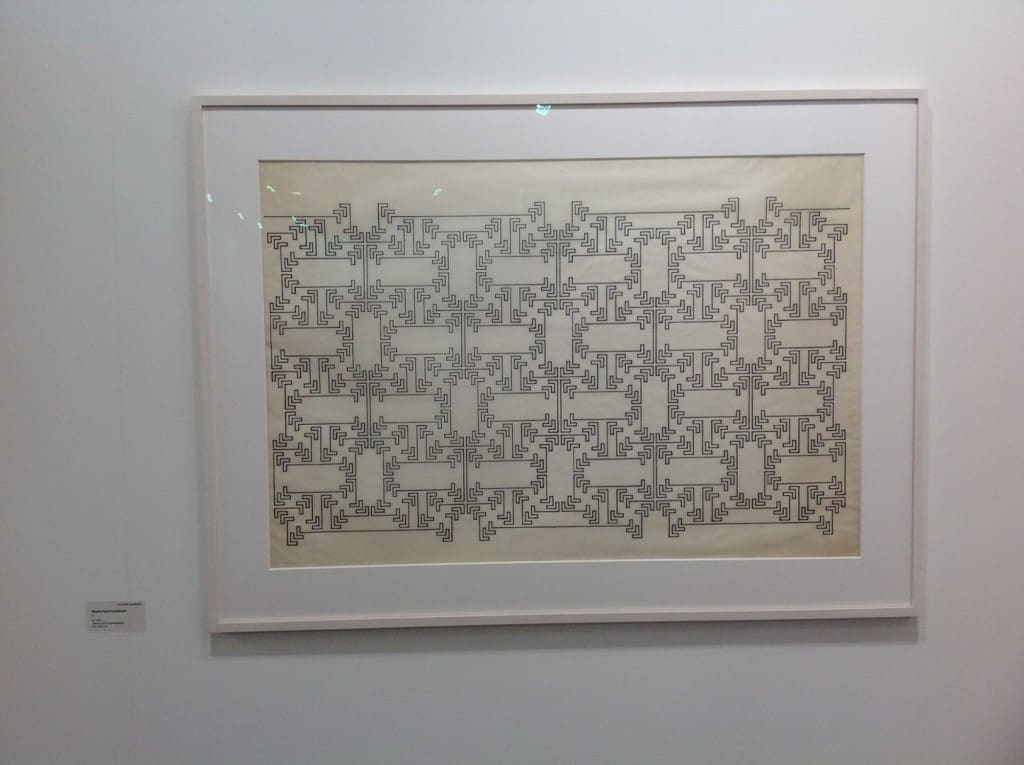
Wacław Karol Szpakowski, Galerie Berinson, photo Contemporary Lynx

Wojciech Fangor, drawing (second from the left), 1956, oil on paper, Galerie Berinson, photo Contemporary Lynx
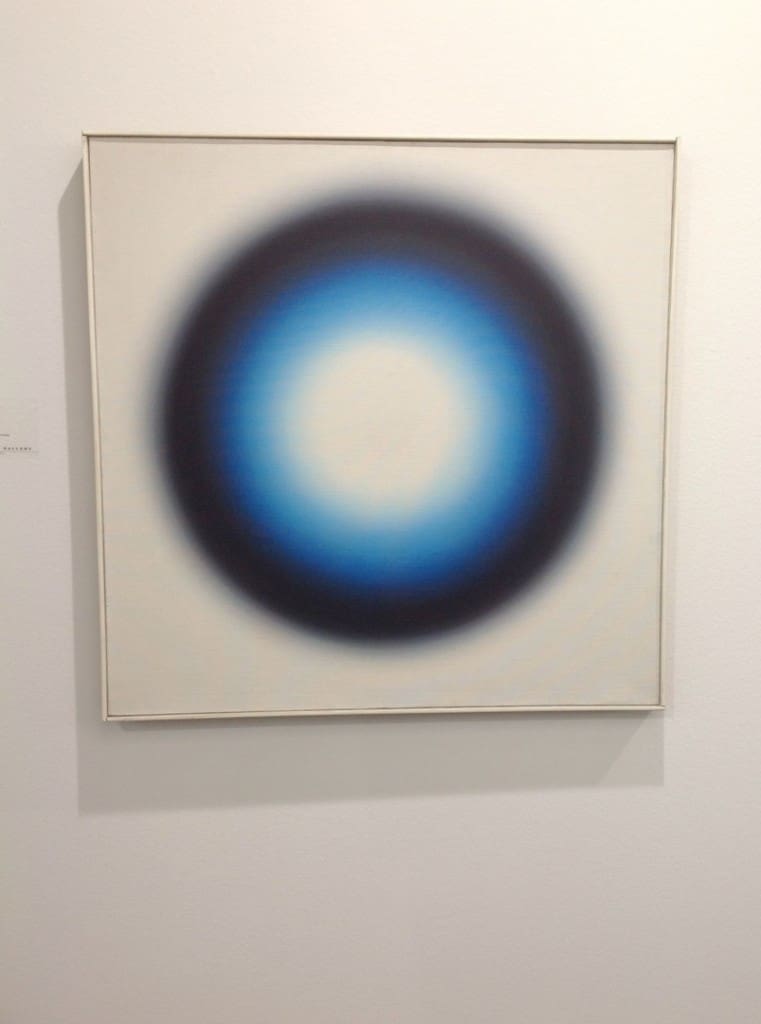
Wojciech Fangor, No. 15, 1963, oil on canvas, 99 x 99, The Mayor Gallery, photo Contemporary Lynx
One of Fangor’s works was up for sale by London’s Mayor Gallery. It was an abstract, centralising work produced in the 60s. It could be purchased for $300,000, a price significantly higher than other works by this artist on sale in the domestic art market.

Julian Stanczak, Synchronized VII, acrylic on canvas, Mitchell-Innes&Nash, photo Contemporary Lynx
At the stand of New York’s Andrea Rosen Gallery one could see sculptures and drawings by Alina Szapocznikow, which very rarely form part of auctions in Polish auction houses (when it comes to the Polish art market, only Starmach Gallery regularly puts works by this artist up for sale). Andrea Rosen Gallery presented three drawings by Szapocznikow, each one for sale for 60,000 Euros.

Alina Szapocznikow, Untitled, c. 1970-1971, ink on laid paper watermarked, 63 x 43 cm, Andrea Rosen Gallery, photo Contmporary Lynx
In general, women’s art was strongly represented. Objects, installations and paintings by the following female artists were displayed by a variety of galleries: Monika Sosnowska (object “Untitled” in Gisela Capitain Gallery for 75,000 Euros), Alicja Kwade (303 Gallery and Walter König Galerie – Mirror/Clock for 17,000 Euros), Goshka Macuga (Andrew Kreps Gallery and Galerie Rüdiger-Schöttle both galleries presented her woven, wall-fitted object for 90,000 Euros), works by Paulina Ołowska, or a collection of objects and installations which consist of multiple elements, by Kasia Fudakowski in Chert Galerie (within Art Statements, which was again transferred to the main hall, where Art Galeries reigns).

Monika Sosnowska Untitled, 2015, steel, lacquer, 92 x 196 x 130 cm, Gisela Capitain Gallery, photo Contemporary Lynx

Alicja Kwade, Watch, 2009, wall clock, metal, mirrored glass, mechanic clockwork, 30 cm, Konig Galerie, photo Contemporary Lynx

Alicja Kwade, Light Transfer of Nature, 2015, mirrors, wood, concrete, brass, aluminum, granite, 303 Gallery, photo Contemporary Lynx

Goshka Macuga, Madness-Insane, 2014, wool tapestry, edition of 5, Galerie Rüdiger-Schöttle, photo Contemporary Lynx

Goshka Macuga, Madness-Insane, 2014, wool tapestry, edition of 5, Andrew Kreps Gallery, photo Contemporary Lynx

Piotr Uklański, Massimo de Carlo, (160 000$), photo Contemporary Lynx

Paulina Ołowska, Charlotte and Serge, 2015, oil on canvas, 220 x 120 cm, Metro Pictures, photo Contemporary Lynx

Michał Budny, pink, 2015, 165 x 140 x 23 cm, photo Contemporary Lynx

Michał Budny, Only Fear, 2015, wood, coated paper, blanket, 190 x 125 x 8 cm, Galerie Nordenhake, photo Contemporary Lynx

Kasia Fudakowski, Chert Gallery, photo Contemporary Lynx

Kasia Fudakowski, Chert Gallery, photo Contemporary Lynx
Despite the diversity of forms, techniques and movements, whilst wandering through the fair, one easily notices that painting is the dominant form of art there. Paintings are one of the mediums most frequently purchased by private art collectors. One of the most prominent Polish painters, Wilhelm Sasnal –with whom we recently had the pleasure to publish an interview with in our printed magazine – had his works presented at a few stands. First of all, we must mention London’s Sadie Coles Gallery, which recently organised an solo exhibition of Sasnal’s works during the last six months. Works from 2012 and 2014 could be bought at their stand for 35,000 Euros. We also found another Sasnal painting dated 2012 at the stand of Anton Kern Gallery. Its price was $55,000.

Wilhelm Sasnal, left: Untitled, 2012, oil on canvas; right: Swastika, 2014, oil on canvas, Sadie Cole, photo Contemporary Lynx

Wilhelm Sasnal, Untitled, 2015, oil on canvas, 50 x 70 cm, Anton Kern, photo Contemporary Lynx
Sasnal belongs to a generation of artists from the 70s, whose position on the market has been firmly established. However the works of younger artists were also featured at the fair. These artists look for inspiration outside of popular culture, the surrounding reality and their immediate environment, and are therefore dubbed post-surrealists/tired with reality. They seek and attempt to present the world in its microscopic form, i.e. the internal, surreal world, or the real world to the extent to which it exists within them, in their imagination, their subconscious. As mentioned previously in relation Art Unlimited, Jakub Julian Ziółkowski took the fair by surprise. Dorota Jurczak and Tomasz Kowalski, who are almost the same age as Ziółkowski, also received a good reception. Dorota Jurczak’s works have been annually presented by Sies + Höke Gallery from Dusseldorf, while Tomasz Kowalski’s works were displayed by carlier gebauer Galler, which has been representing him for a few years.

Tomasz Kowalski, carlier gebauer, photo Contemporary Lynx

Tomasz Kowalski, carlier gebauer, photo Contemporary Lynx
Despite all this, the greatest volume of works by Polish artists was inevitably seen at the stands of Polish galleries. As prevously mentioned, Starmach Gallery and Foksal Gallery Foundation were the most prominent Polish galleries in Basel. Their regular presence at this fair is determined by the same group of artists represented by the galleries (it goes without saying that the success of these artists is a result of the number of sales of their works). Of course, I could have described every individual artist here. However this year I mostly wondered why these galleries consistently decide to display the works of the same artists year in, year out (by the way, this problem is not only atrributed to Polish galleries, but rather relates to most of the fair participants). One reason seems obvious – there is the matter of sales… Whoever knows the demand of the market and has friends among collectors, who visit Basel art fair every year to enrich their collections, is not at all surprised to think that such expensive art fairs constantly entice visitors with the same offers. Nonetheless, I tried to think outside the box and not demonise galleries – the way of thinking I just illustrated could make an impression on us that there is some clever game being conducted between galleries and art collectors – as a result I analysed the whole art fair ‘machine’. In fact, art fairs select participating galleries according to a certain rule, which unfortunately is difficult to predict. Each gallery must meet specific requirements, accept special conditions, and perform certain actions. One of the key components of their success is the type of art represented by them during their regular activities, as well as their offers selected specifically for the fair. One can assume that in the process of approving galleries from specific countries, organisers take into account not only their artistic achievements, but also the kind of art they present. This is where the repetitiveness of the artists whose works are presented on the stands comes from. What would happen if a gallery presented something which is not in line with their profile or with the expectations of art fair organisers? Nobody wants any surprises… Then how about small experiments within the confines of accepted rules?
Written by: Dobromila Blaszczyk
Translated by: Joanna Pietrak
Edited by: Maggie Kuzan
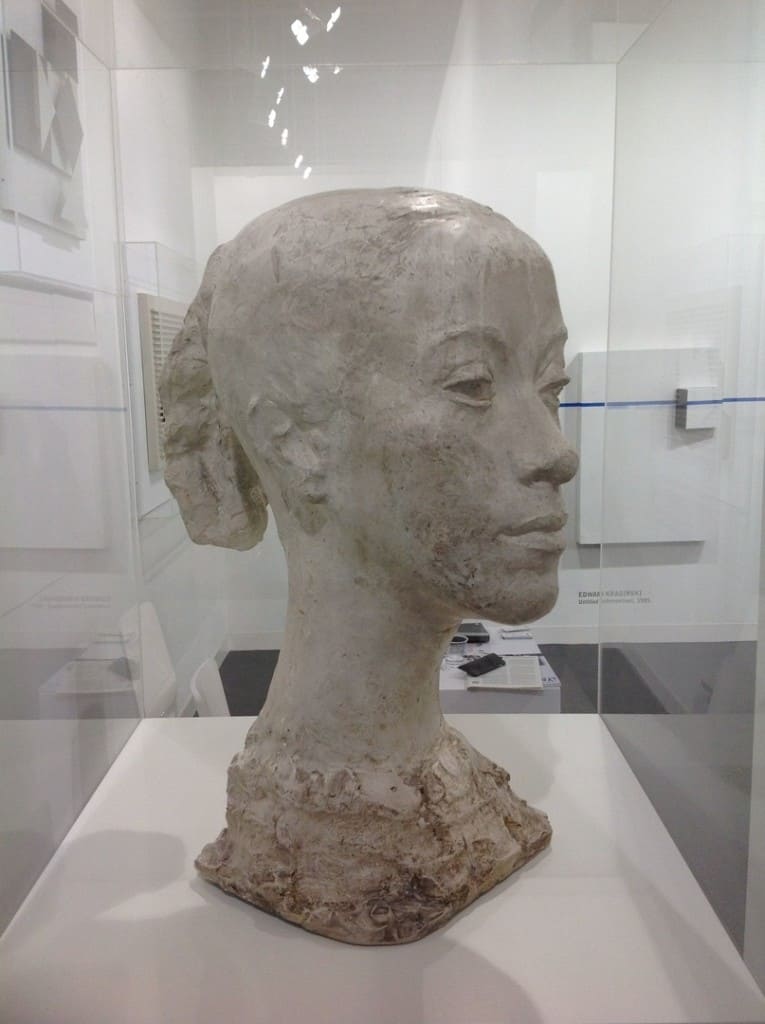
Alina Szapocznikow, Starmach Gallery, photo Contemporary Lynx

Edward Krasiński, Henryk Stażewski, Starmach Gallery, photo Contemporary Lynx
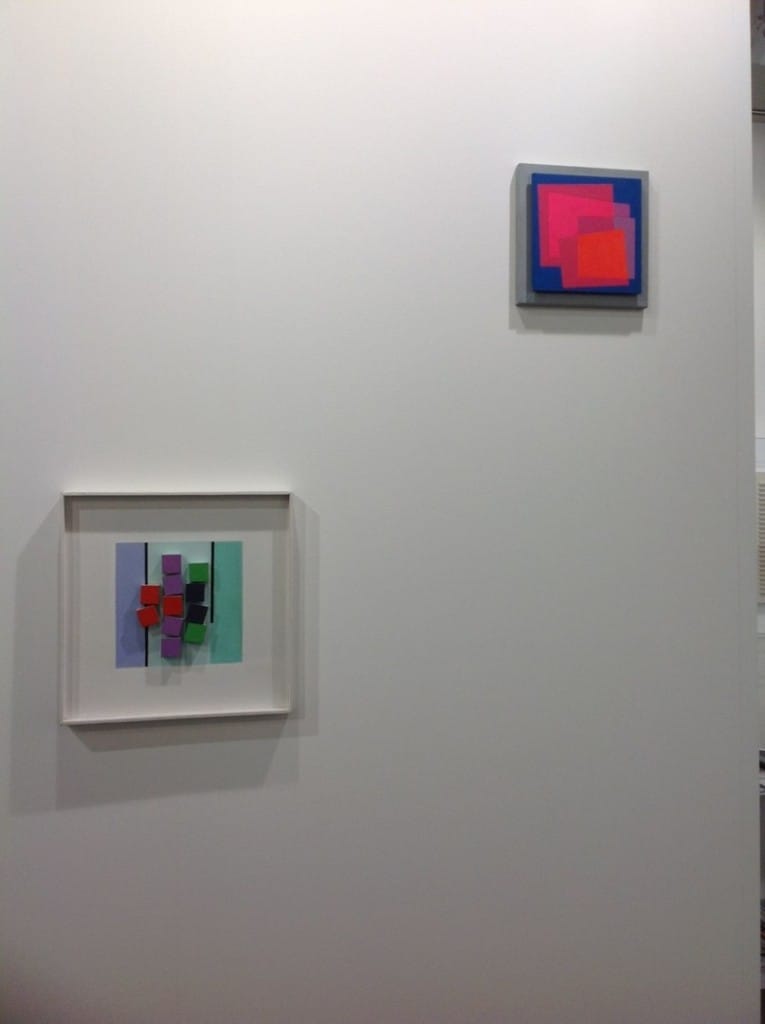
Henryk Stażewski, Starmach Gallery, photo Contemporary Lynx

Henryk Stażewski, Starmach Gallery, photo Contemporary Lynx

Edward Krasiński, Starmach Gallery, photo Contemporary Lynx

Edward Krasiński, Foksal Gallery Foundation, photo Contemporary Lynx

Edward Krasiński, Foksal Gallery Foundation, photo Contemporary Lynx

Jakub Julian Ziółkowski, Foksal Gallery Foundation, photo Contemporary Lynx

Paulina Ołowska, Foksal Gallery Foundation, photo Contemporary Lynx

Jakub Julian Ziółkowski, Piotr Janas, Foksal Gallery Foundation, photo Contemporary Lynx

Anna Niesterowicz, Foksal Gallery Foundation, photo Contemporary Lynx

Monika Sosnowska, Foksal Gallery Foundation, photo Contemporary Lynx

Art Unlimited, photo Contemporary Lynx










